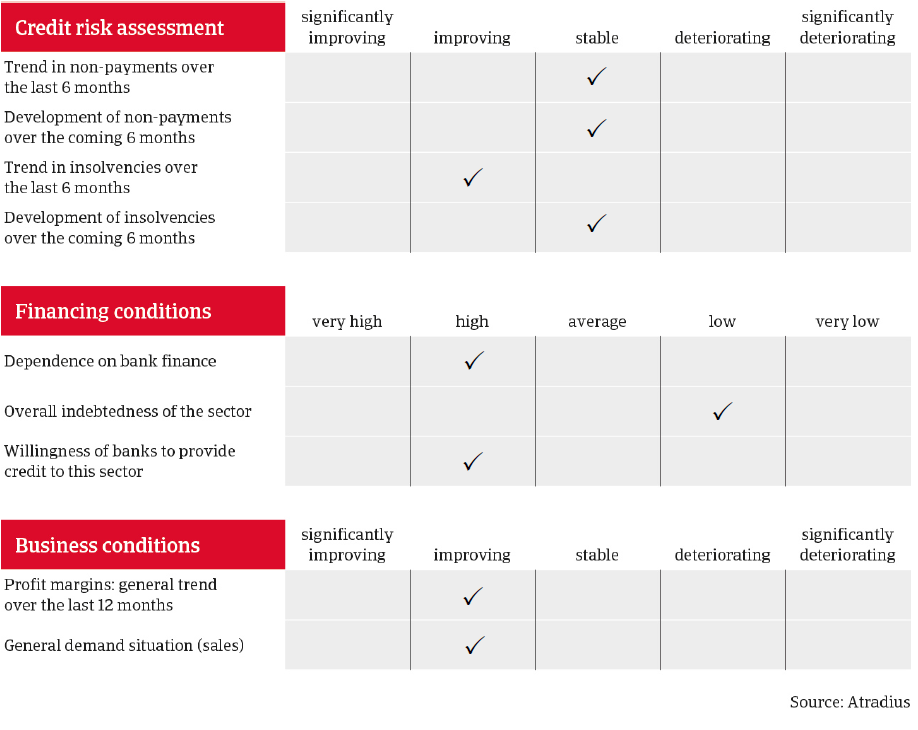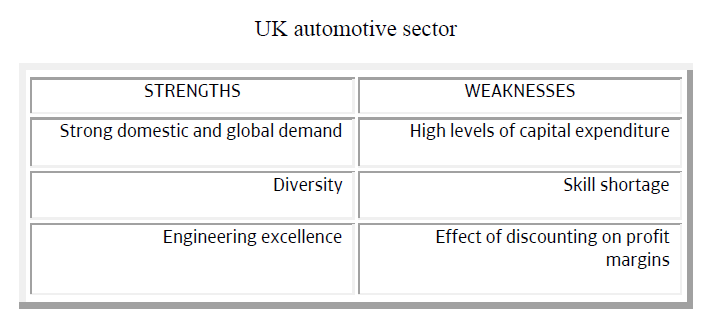The UK car market continued to grow last year. Compared to other UK industries, the automotive sector’s default and insolvency rate is good, with a stable outlook.
United Kingdom
- Growing production and sales
- Payments take between 45 and 90 days
- More troubles for smaller aftermarket businesses

UK car manufacturing is staging a recovery amid billions of pounds of investment pumped into UK factories by foreign-owned companies such as Jaguar Land Rover and Bentley, as well as mass-market Japanese producers Nissan and Toyota. Between January and July 2014 production increased 3.4%: to 923,884 units. Almost eight out of 10 cars made in the UK are exported. Structurally, the UK’s automotive industry has been well placed to ride both the emerging market boom and the move upmarket to more aspirational, premium models.
The UK car market continued to grow last year. According to the European Automobile Manufacturers´ Association (ACEA), new passenger car registrations in the UK increased 10.8% year-on-year in 2013, compared to a 1.7% decrease in the EU, while commercial vehicle registrations increased 14.5% (up just 1% in the EU). This has continued in 2014, with new passenger car sales growing 10.1% between January and August: to 1,460,172 units. The Ford Fiesta was the bestseller in August, followed by the Ford Focus and Vauxhall Corsa, and these have also been the top three best sellers throughout the year to date.
This year, British consumers have been buying new cars at the fastest rate in nine years, as the economic rebound gains momentum, unemployment falls and consumer confidence rises. Attractive financing options and lower running costs available for newer models are also driving demand. The Society for Motor Manufacturers expects car sales to increase 8.1% this year: to 2.45 million units. Most auto suppliers´ credit ratios and their ability to generate cash have improved significantly as a result of their solid profitability, and this has allowed them to reduce debt.
However, the sector’s success is being partially fuelled by discounts and margin-eroding sales tactics, which means that profitability will not necessarily rise in line with shipments. Fleet sales to companies are often heavily discounted. Sales to rental companies are at cost, or lower, and the biggest loss maker involves dealers registering cars as demonstration models only to sell them on to customers, unused, at discounted prices.
Besides a potential rise in interest rates, the biggest challenge facing the automotive retail sector will be the impact of the increasing numbers of nearly-new used vehicles returning to the market. This could lower residual values with the knock-on effect that a used vehicle purchase may become a more competitive proposition. As in 2012 and 2013, average payments in the UK automotive industry take between 45 and 90 days and this is expected to remain the case in the coming months. Protracted payments in the sector are rare and consequently we have seen no increase in notifications of non-payment over recent months. Compared to other UK industries, the automotive sector’s default and insolvency rate is good, with a stable outlook.
Our risk underwriting stance is positive towards all parts of the UK automotive sector and is even more relaxed than last year. However, third tier component manufacturers and independent specialist vehicle manufacturers represent higher risks than other segments. Most of the credit insurance claims we receive relate to the aftermarket and haulage subsectors. Characteristically, these are usually small businesses where information is limited to abridged accounts and most of these failures have been caused by internal management issues.

Downloads

1.3MB PDF